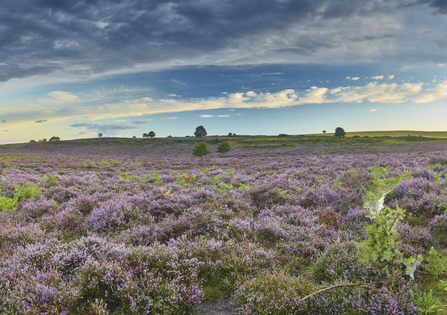The Fens East Peat Partnership has been awarded £815,877 to explore the feasibility of restoring peatlands in the Fens. The government's Nature for Climate Peatland Grant Scheme "discovery grant" will enable the partnership to investigate the state of peat on 20 sites and neighbouring areas across Cambridgeshire, Lincolnshire, Norfolk and Suffolk. The aim will be to develop site restoration plans for those peatland sites.
Lincolnshire Wildlife Trust are leading the project on behalf of The National Trust, Natural England, Norfolk Wildlife Trust, RSPB and the Wildlife Trust for Bedfordshire, Cambridgeshire & Northamptonshire. These organisations have been working together across the Fens for many years through the Fens for the Future partnership.
Lincolnshire Wildlife Trust Head of Conservation, Tammy Marie Smalley, says: "These are very exciting times, as peatlands are now in the spotlight as a habitat that, if managed correctly, can help us address the two environmental crises, climate change and biodiversity loss. The Fens are incredibly important for an array of threatened species, but also as the bread basket of our nation's food production. We want to work with our partners and neighbours to ensure that water resource management delivers for peatland restoration and much more besides."
Eliot Lyne, Norfolk Wildlife Trust CEO, adds: "The Fens, which cover significant parts of west Norfolk, as well as Cambridgeshire and Lincolnshire, make up one of the largest areas of remaining lowland peat in the country.
"In Norfolk we will be working with landowners across seven sites in and around the west of the county, including NWT Roydon Common, Natural England's Dersingham Bog, as well as areas of privately owned farmland.
"Together, we are investigating the potential to restore as much as 1100 hectares of peat soils across the county.
"What we learn in the coming year is the first step in achieving our vision to revitalise Norfolk's wildlife-rich, fens landscape.
"By exploring the best places to regenerate areas of peatland and supporting the development of innovative land management practices for this special environment, we can protect and enhance a vital resource for both wildlife and people.
"As well as offering potential protection against flooding, improving water quality and providing new places for people to connect with nature, a landscape filled with healthy peat-based wetlands will teem with life, supporting a variety of wildlife species including dragonflies and damselflies, breeding waders, bitterns, cranes and otters."

